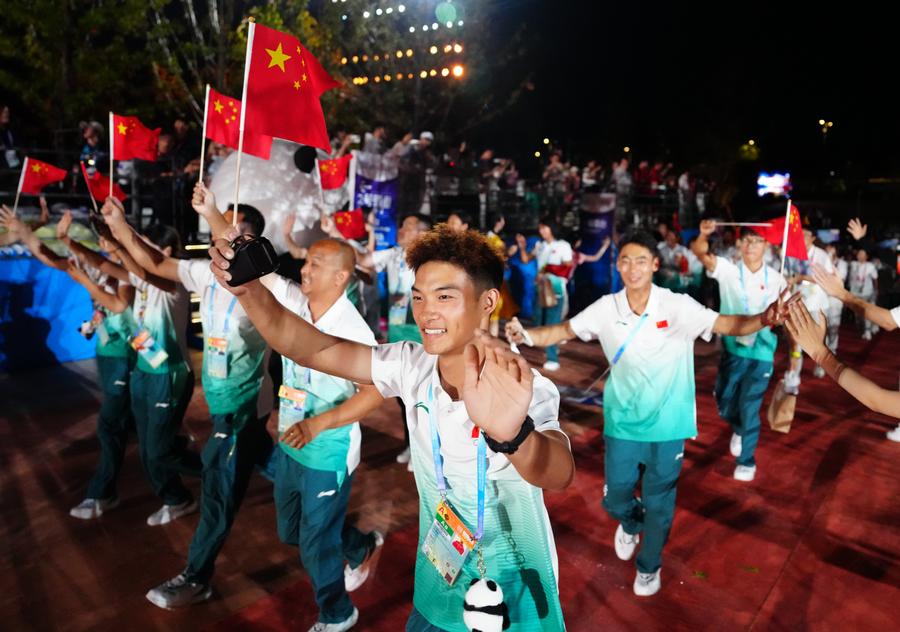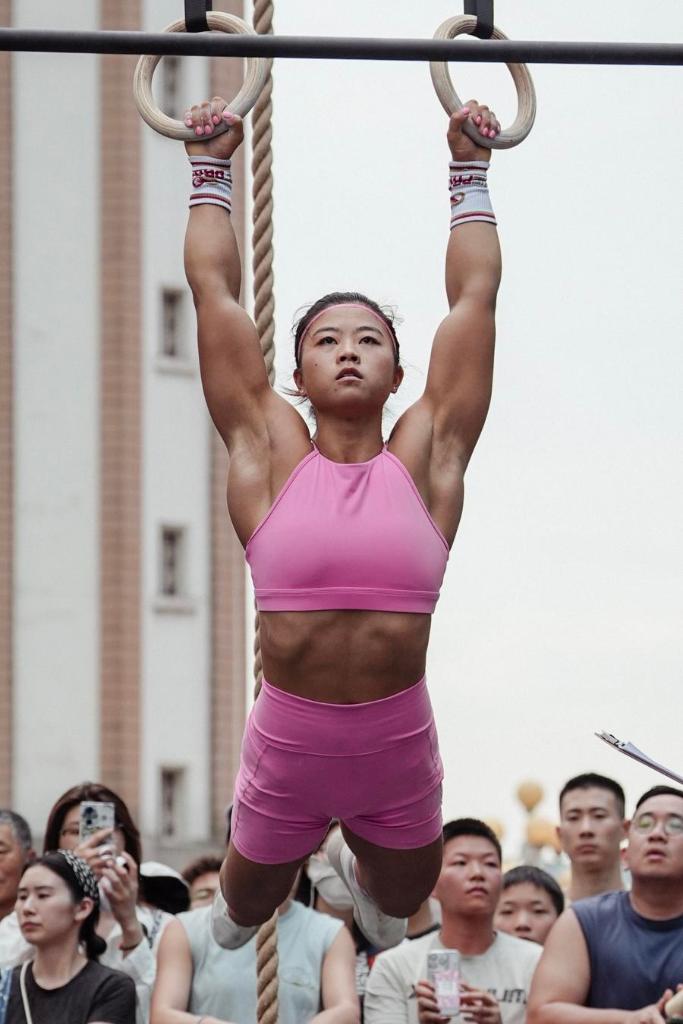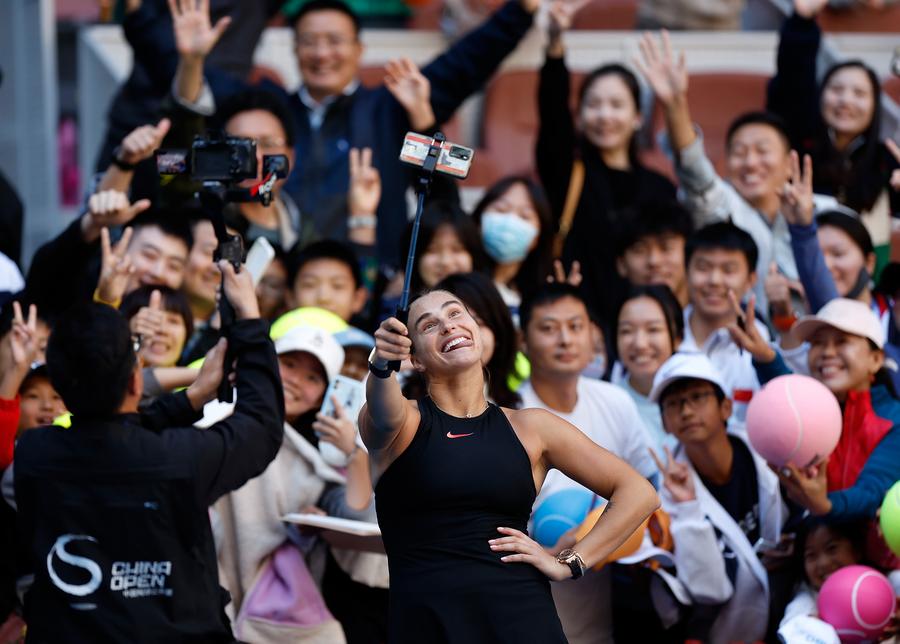
Members of China's delegation parade during the closing ceremony of the 2025 World Games in Chengdu, southwest China's Sichuan Province, on Aug. 17, 2025. (Xinhua/Chen Xinbo)
The Chengdu World Games, alongside other major events, has driven significant growth in China's sports industry, fostering a vibrant sporting culture and contributing to impressive economic and public health achievements nationwide.
The 2025 World Games that concluded last weekend gave another push to the vigorous development of Chengdu's sports industry.
Propelled by the World Games and more than 30 other sporting events, overall sport-related consumption exceeded 40 billion yuan (5.6 billion U.S. dollars) in the first seven months of the year in Chengdu.
The World Games is the fifth major international sporting event to have been staged in China since 2022, after the Beijing Winter Olympics, Chengdu Universiade, Hangzhou Asian Games and Harbin Asian Winter Games.
"World-class events have been a driving force to inspire more people, particularly youths, to take part in sports and boost the local economy," remarked Zhang Xin, director of competitive sports at China's General Administration of Sport, in a press conference concentrating on the country's sports development during the 14th Five-Year Plan period (2021-2025).

Chinese CrossFit athlete Wang Xuanlin performs consecutive muscle-ups on gymnastic rings in Chongqing, southwest China, June 29, 2025. (Xinhua)
China's 17th National Fitness Day arrived on August 8, one day after the opening ceremony of the Chengdu World Games. Official data shows on this year's National Fitness Day, over 22,000 sporting activities were held across the country, reaching more than 11 million people.
The lively scenes on National Fitness Day reflected China's year-round sports enthusiasm, from road running and winter sports to the popular Village Super League and Jiangsu Province's grassroots Su Super League.
"With more people getting involved, we're seeing a positive trend toward fostering a stronger sporting culture and healthier lifestyles." noted Ding Dong, director of mass sports at China's General Administration of Sport.
According to statistics released in the press conference, the total area of sports venues across China reached 4.23 billion square meters by 2024, with 3.71 million registered social sports instructors across the country.
Both high-level events and mass sports contribute to the sports industry and China's economic growth. Total ticket revenue from the 2024 China Open, one of the top tennis events in China, hit 80 million yuan (11.1 million U.S. dollars), while this year's regional football tournament Su Super League spurred consumption across Jiangsu to exceed 38 billion yuan (5.3 billion U.S. dollars).

Aryna Sabalenka poses with fans after winning the women's singles round of 16 match at the 2024 China Open in Beijing, Oct. 2, 2024. (Xinhua/Wang Lili)
"The total scale of China's sports industry has grown at an average annual rate of over 10 percent in the past five years," said Yang Xuedong, economic director at China's General Administration of Sport, adding that China's ice and snow industry has grown from 381.1 billion yuan in 2020 to 970 billion yuan in 2024.
"In the past five years, China has made remarkable achievements in moving toward the goal of building a sports powerhouse," said Gao Zhidan, director of China's General Administration of Sport. "By the end of 2024, Chinese athletes have won 519 world titles and set 68 world records. China's public fitness and sports industry have also reached new heights, injecting vitality into the community."
Looking ahead, he noted, "We will dedicate to making the outcomes of sports development benefit all people in a long run."
















